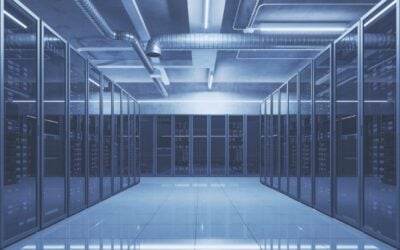
In a recent report from trade association Energy Storage Canada (ESC), energy storage was cited as “a critical component of future electricity grids” for the country.
The report, ‘Energy Storage Canadian Market Outlook,’ was published this month and explores the current role of energy storage in Canada.
ESC’s report begins by examining federal, provincial and corporate policy supporting energy storage.
On a federal level, energy storage installations have been driven by decarbonisation objectives. Challenges to global trade and supply chain shakeups have also spurred efforts for “self-sufficiency.”
Try Premium for just $1
- Full premium access for the first month at only $1
- Converts to an annual rate after 30 days unless cancelled
- Cancel anytime during the trial period
Premium Benefits
- Expert industry analysis and interviews
- Digital access to PV Tech Power journal
- Exclusive event discounts
Or get the full Premium subscription right away
Or continue reading this article for free
Canada aims to reduce its greenhouse emissions by 45–50% below 2005 levels by 2035.
In its 2022 report, ESC noted that the country would need at least 8 to 12GW of energy storage to achieve this goal.
Energy storage can continue to grow from provincial governments integrating energy storage into existing regulatory framework.
ESC says that on a corporate level, “global environmental, social and governance (ESG) investments, reliability requirements, and corporate mandates are driving investment in energy storage.”
Alberta and Ontario
Alberta’s Independent Electricity System Operator (AESO) and Ontario’s Energy Board (OEB) are two examples of provincial regulatory bodies that have set targets in recent years to boost energy storage in their respective provinces.
ESC highlights that in 2019, AESO released the Energy Storage Roadmap, which included plans to integrate energy storage into AESO authoritative documents and the AESO grid and market systems.
Spring 2022 saw Alberta pass Bill 22, which included two key provisions for energy storage. Firstly, it established legislated definitions for energy storage resources and facilities, and secondly, it required regulated utilities to go through a competitive process before owning energy storage projects.
At present, ESC states that Alberta’s Restructured Energy Market (REM) is integrating energy storage resource capabilities and services to meet the future needs of the electricity system.
Ontario has introduced major policy reforms to bring energy storage into its electricity system. The province’s Integrated Energy Plan seeks to increase its storage resources and develop transmission networks for distributed storage.
Meanwhile, the OEB has revised its codes to incorporate energy storage into the regulatory framework and removed Uniform Transmission Rates for storage resources that respond to IESO Market Signals.
The Independent Electricity System Operator (IESO) has introduced market design changes to integrate energy storage across its administered market, following its 2018 report ‘Removing Obstacles for Storage Resources in Ontario’.
Current initiatives under IESO’s Enabling Resource Programme include developing a single resource energy storage model, implementing state-of-charge monitoring, creating exemptions for uplift charges, and improving storage’s ability to provide frequency response services.
Ontario and Alberta, Canada’s two wholesale electricity market jurisdictions, are leading the way in installed energy storage capacity.
Ontario has accounted for over two-thirds of the grid-connected energy storage, with 486MW, while Alberta has installed more than a quarter, with 190MW.
In May, Ontario more than doubled its energy storage capacity after IPP Northland Power’s 250MW/1,000MWh Oneida Energy Storage project in Haldimand County entered commercial operations.
ESC’s report predicts that Canada’s energy storage outlook for 2050 is between 20GW and 40GW, taking into account both short-duration and long-duration energy storage (LDES) technologies. There are opportunities in every region, with Ontario leading the way, followed by BC and Alberta.
The report also includes actions to enable and enhance Canada’s energy storage.
Although there has been substantial progress in energy storage within the country, further development is required in regulatory frameworks to fully recognise storage’s distinct role, with more defined requirements for planning and permitting processes.
Market designs need to keep evolving through single network models that simplify multiple services. Meanwhile, setting up a regular procurement roadmap would increase investor confidence and enable utilities to apply the lessons they’ve learned, especially in terms of different storage durations and strategic grid locations.





